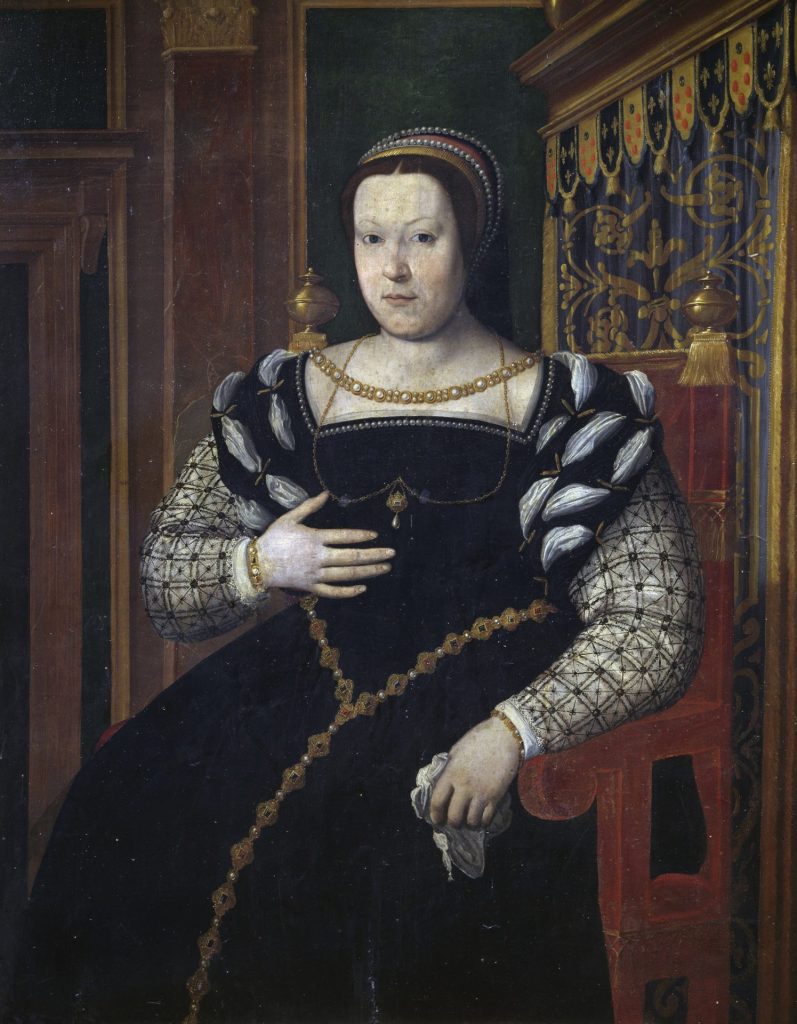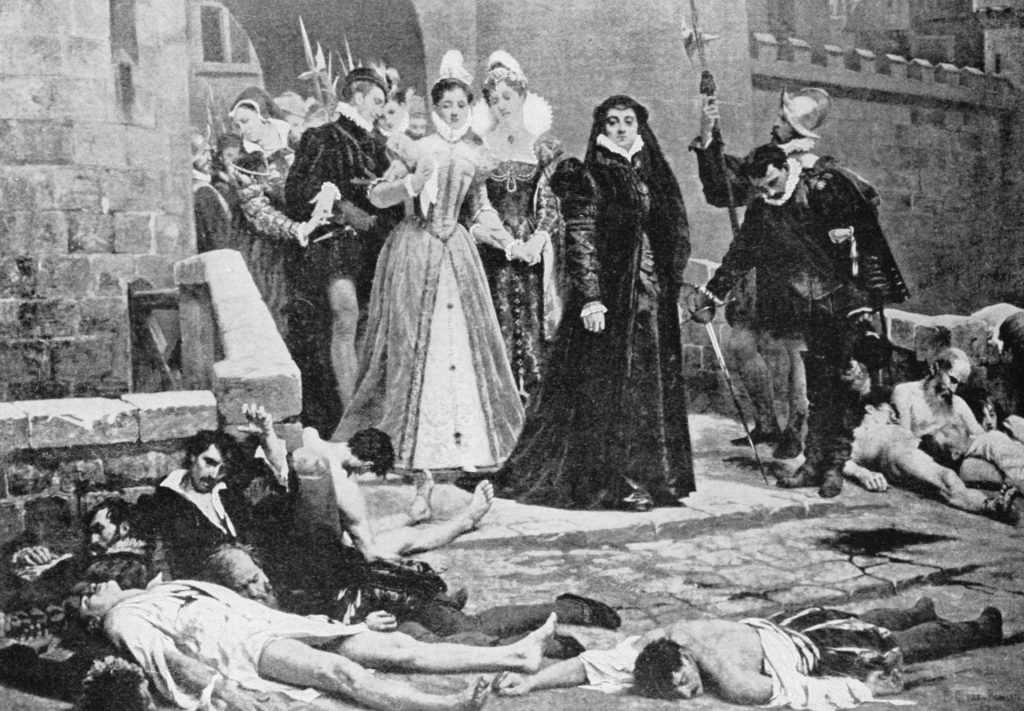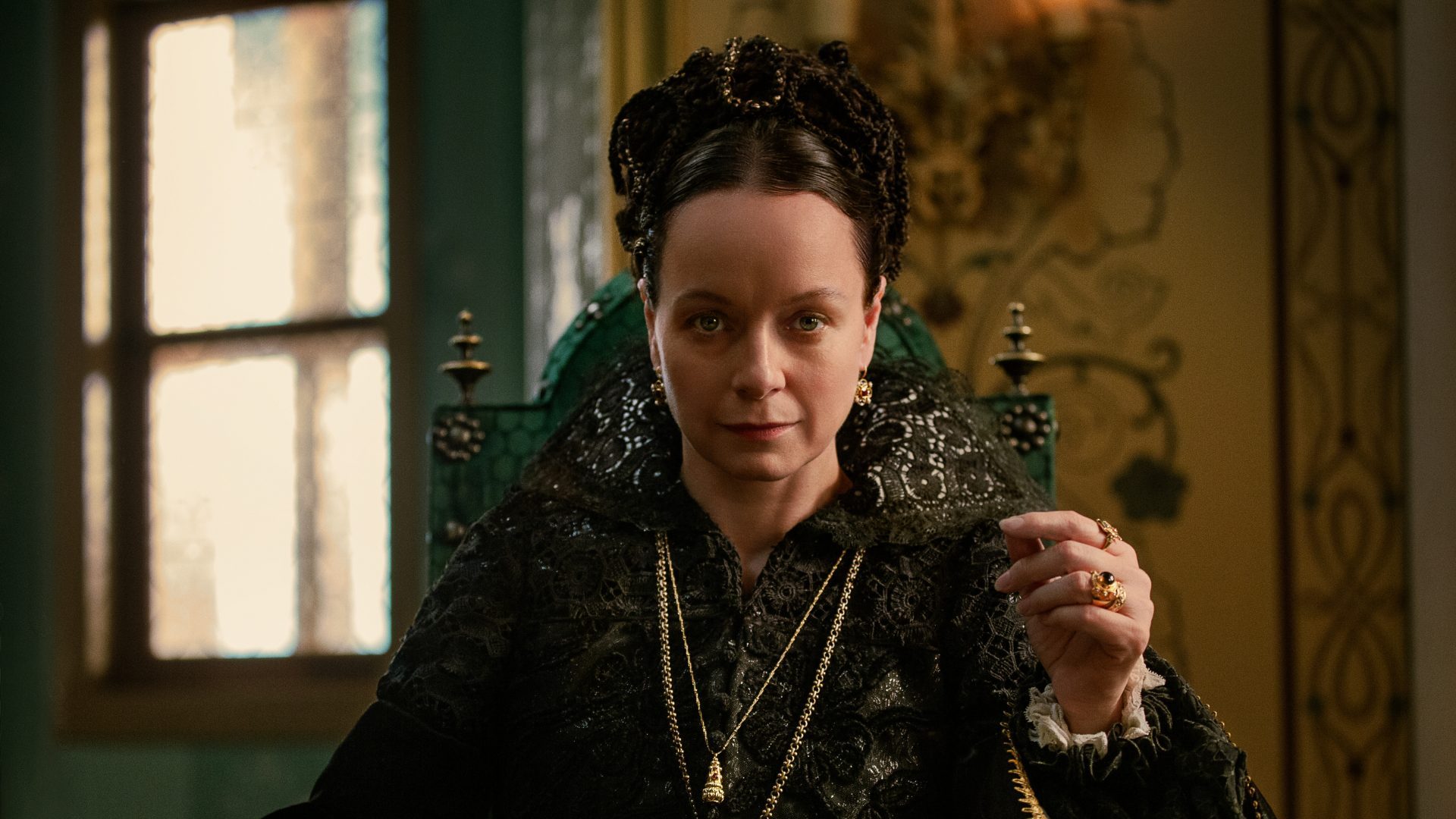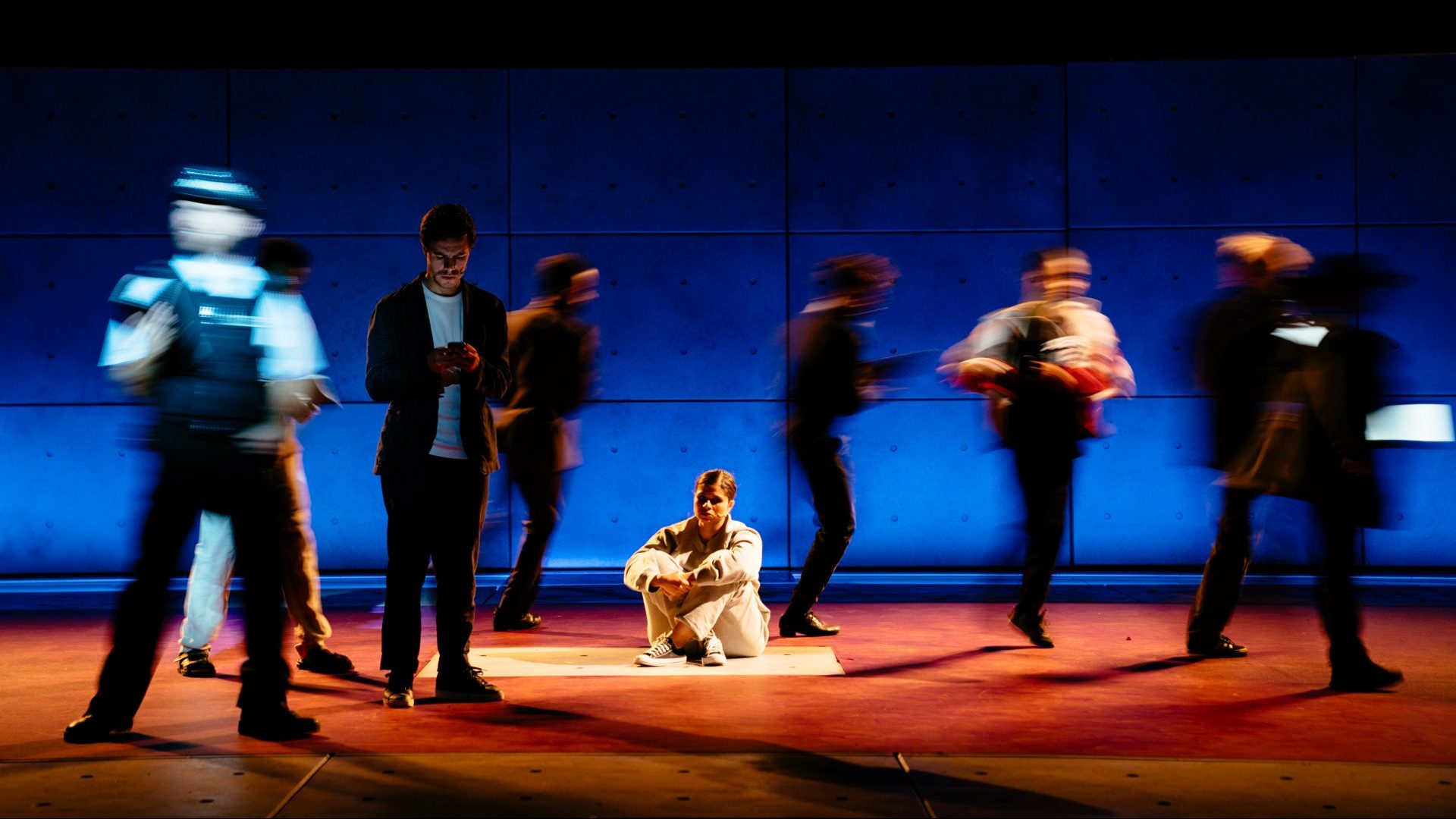We all have to play games in order to survive and succeed in our lives. But some games, and some lives, are different.
The life of Italian noblewoman Catherine de’ Medici lasted from 1519 to 1589, during which she spent 12 years as Queen of France, gave birth to three future French kings and played a part in one of history’s grimmest moments. Her afterlife has been one of vilification, with Catherine nicknamed the “Devil’s Queen” and the “Maggot from Italy’s tomb”.
She has been depicted on film at regular intervals and, just as Richard III tends to be represented as a hunchbacked grotesque, she is usually shown as gimlet-eyed, scowling, and cold-hearted.
She was memorably portrayed in Patrice Chéreau’s bloodsoaked 1994 adaptation of Dumas’s La Reine Margot. In that film, the role of the devious Catherine was taken by Virna Lisi, in a chilling performance far removed from her better-known role in the Jack Lemmon comedy How to Murder Your Wife (1965).
Now a more subtle and sympathetic version of Catherine has arrived, in the shape of Samantha Morton’s starring role in Starzplay’s new streaming series The Serpent Queen. “Women have been vilified throughout history for being women, and for being strong and for making choices,” Morton recently said. “Because history is written by men and the male perception of women is to vilify us, put us down, call us witches. These women are all surviving in a very male-dominated world. And they have to play very dark games of chess in order to do that.”
Based on Leonie Frieda’s 2004 biography Catherine de Medici: Renaissance Queen of France, The Serpent Queen will seek to humanise, or at least explain the queen, exploring her upbringing, motivations, and complex familial relationships.
Morton’s Catherine is less crone-like than previous interpretations – but you still really wouldn’t want to get on her wrong side. What she actually looked like is suggested by the single contemporary portrait of Catherine still in existence, which depicts her with her offspring. The Queen-regent appears forbidding, with a stern gaze and a proprietary hold on the young Charles IX.
The television series emits a similar air of cold control. Charles Dance plays Catherine’s uncle, Giulio di Giuliano de’ Medici, also known as Pope Clement VII, and he looks like a prelate it would be dangerous to cross – a priestly version of the ruthless Tywin Lannister, whom Dance played in Game of Thrones. The real Pope Clement was a tough customer, who famously endured the 1527 Sack of Rome. He also refused Henry VIII’s petition to annul his marriage to Catherine of Aragon and engineered his niece’s marriage to the Valois Prince Henri.
But what can these characters say to us now? Morton has compared her to Tony Soprano, to Don Corleone in The Godfather, and I put the question to Justin Haythe, the showrunner of The Serpent Queen. He is a novelist and screenwriter whose work includes Revolutionary Road and Red Sparrow.

“I worry there is some resonance with today,” Haythe tells me. “People increasingly feel there is no point in competing, because the game is rigged.” When that happens, he says, “people give themselves permission to do anything to get ahead. Personal morality is beside the point.”
As for Catherine’s sinister reputation, Haythe says: “They said she was crazy, or a witch who practised the dark arts and killed people with poisoned apples – or gloves. This was the standard way we treat powerful women in history. What her male competitors did not count on, however, is the way she weaponised this reputation, and used it to her advantage. She was her own PR machine.
“Staying true to the spirit of the truth was important,” Haythe says. But despite this, “I wanted a modern take on the past that includes our understanding of psychology, disease, brain chemistry and natural science… whole sections of society that historians and storytellers have been leaving out for ages.”
The series included shots of the Valois castles of Chambord and Chenonceau, locations that were chosen, he says, because “there was nothing functional to them. It was all for show, a performance if you like, or an act of intimidation. To put human, relatable behaviour in these locations was really exciting visual storytelling.”
But at the centre of it all is the character of Catherine and the question of who she really was. Was she “an immoral person who passed herself off as something else to gain power,” asks Haythe, “or a moral person who committed immoral acts to hold a kingdom together?”
The Medici family were from a comparatively humble Florentine mercantile background, and they rose to power through their dominance of the banking sector. They became popes, dukes of Florence and Tuscany, and married into some of the most prominent royal families of Europe.
But the Medicis were regarded as parvenus in aristocratic circles because of their origins in trade, vaulting ambition, nouveau-riche extravagance, murderous scheming and arrogance. Jacopo Buonaparte was a supporter and friend of the Medici Pope Clement VII. The Bonapartes – they eventually dropped the “u” – were another family who later rose to power. But like the Medicis, they were also treated condescendingly as mere interlopers by the more established nobility.

This was the family into which Catherine was born, one that was defined by the acquisition of power and status, whose members were expected to further the Medici name and add to its prestige. Catherine certainly threw herself into the task and was willing to endure a deeply unhappy marriage to the future King Henri II of France to further the family’s fortunes.
It certainly bore results. Of their 10 children, three became kings of France, and two of her daughters married kings. But despite this illustrious record, Catherine’s fate was to oversee the end of the Valois line.
The three kings, Francis II, Charles IX, and Henri III, were either physically feeble, mentally unstable, or both. None left legitimate issue, and some were rumoured or have enjoyed – if that’s the right word – incestuous relations with their sister, Margaret of Valois, the infamous Reine Margot.
The much-traduced Margaret hit back against the scurrilous rumours in her posthumously published Memoirs (1628), where she attempted with no little wit to put the record straight, saying: “We shall all be perfectly virtuous when there is no longer any flesh on our bones.”
“Men,” she wrote, “are so accustomed to lying, that one cannot take too many precautions before trusting them – if they are to be trusted at all.”
There are several poisonings that are often attributed to Catherine, including that of her own son Charles IX, who had become erratic and wilful. But the event most often associated with Catherine de’ Medici is the St Bartholomew’s Day massacre of 1572. The 450th anniversary of the slaughter was commemorated in August, with the dedication of a garden to the victims at the Church of Saint-Germain l’Auxerrois, where the bell first rang to signal the beginning of the slaughter. The garden faces the Louvre Palace.
Europe has a long and terrible history of butchery – and yet the massacre associated with Catherine is the most notorious of the pre-modern era. It is popularly believed that she used the widespread dislike of the powerful Protestant Huguenot faction to engineer the bloodbath in order to bolster her political position.
The massacre took place in Paris on the eve of the feast of St Bartholomew, two days after the initial failed assassination attempt on the life of Admiral Gaspard de Coligny, the powerful Huguenot leader. Prompted by his mother, King Charles IX ordered the slaying of the senior Huguenots who were attending the marriage of Henri of Navarre to the king’s sister, Margaret. The slaughter lasted for weeks, and spread from Paris to towns and across the country. The eventual death toll was estimated at between 5,000 and 30,000.
To escape death, Navarre converted to Catholicism, but after escaping Catherine’s court he renounced the faith and became a Huguenot again, which reignited the Wars of Religion with the Catholic League. But then in 1593 he decided, at the gates of the besieged capital, that Paris “vaut bien une messe” (“Paris is well worth a mass”) and he re-converted to Catholicism.
The St Bartholomew’s Day Massacre is recounted in particularly harrowing fashion in 1994’s La Reine Margot. The film graphically depicts the slaughter and, among all the bloodshed, Catherine gleefully watches mass executions from a window at the Louvre. The consequences of Catherine’s slaughter resonated down through French political history. Henri IV later settled some Huguenot disquiet with his Edict of Nantes in 1598, which granted them greater rights, and his grandson Louis XIV would revoke these reforms in 1685. But Henri’s even-handedness towards the Calvinists led to his assassination by the crazed Catholic fanatic Ravaillac 12 years later.
In England, Catherine’s role in the massacre served to bolster anti-Papism, which, together with the bone-headed actions of James II, led to the exclusion of British Catholics from political life until parliament’s passing of the Emancipation Act of 1829. The outrage spread across Protestant Europe and the bloodthirsty drawings and paintings it inspired served as warnings against Papist perfidy.
Catherine also recognised the power of art. She continued the Medici tradition of patronage. She commissioned the construction of the Tuileries and Hôtel de la Reine in Paris. She also introduced ballet to France and promoted painter Antoine Caron (1521–1599), whose favourite themes included, perhaps appropriately, violent purges. His Massacres under the Triumvirate (1566) predated the notorious events of St Bartholomew’s by six years.
Catherine has, with some justification, a sinister reputation, especially when you compare it to that of her namesake Catherine the Great – another foreigner, German in her case – who married an indifferent husband, Peter III, Emperor of All the Russias, and quite probably had him killed. But although the main branch of the Medici family died out with the demise of the bedridden Duke Gian Gastone of Tuscany in 1737, Medici blood continues to run in many of the greatest royal houses of Europe, including the Habsburgs, Bourbons, the House of Lorraine, Savoyards, and Wittelsbachs.
Not forgetting the Windsors, of course. Via their mother’s side, William and Harry are directly descended from Charles II’s illegitimate children. This means that, after centuries, the Medici strain is being reintroduced into the British monarchy. One day, with all the historic weight it brings, a monarch with Medici blood will sit upon the British throne. Catherine would no doubt be pleased at the thought.
The Serpent Queen is showing in the UK on Starzplay, available online or via Amazon Prime



